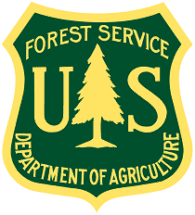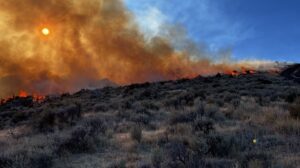Webinar
Webinar recording.
Communication professionals and fire practitioners with significant media experience discuss challenges and success in communicating about fire through media outlets. Panelists share their experiences and provide suggestions for those looking to begin or improve communication through various forms of media. Following a moderated panel discussion, there will be time for audience Q/A.
Panelists:
Lorena Williams is a Public Affairs Specialist and Public Information Officer for the San Juan National Forest in Colorado.
Bob Crimian is a program manager for COMPASS, a science communication organization that champions, connects, and supports diverse scientist leaders to improve the well-being of people and nature.
Eytan Krasilovsky is the deputy director for the Forest Stewards Guild based out of the Southwest office
Webinar recording.
The LANDFIRE program is aware that our stakeholders are interested in obtaining more comprehensive 3D vegetation structure information to inform vegetation and species mapping, carbon accounting, and physics-based fire behavior models. Understanding how to provide annually updated 3D vegetation and fuel metrics in a way that is useful to the most stakeholders and accounts for the logistical and resource constraints within the program is a LANDFIRE goal over the next few years. LANDFIRE wants to connect with innovators who are motivated by the shared challenge of pulling together disparate data sources across scales and dimensions into logical machine learning or deep learning classification methodologies that are accurate, repeatable, and usable by managers. We hope to build these relationships by increasing our engagement across research and management communities to create a new foundation for LANDFIRE.
Webinar recordings.
Exploring how the health of our forests — and planet — depends on what’s beneath our feet.
May 6: Why do foresters need soil scientists?
May 7: How can soil science be applied to forest management?
May 8: How can soil scientists and foresters build relationships?
May 9: How can soil science lead to resilient forests?
May 10: How can research support timber management and soil science?
Webinar recording.
Sam “Jake” Price and Matt Germino, USGS Forest & Rangeland Ecosystem Science Center, present findings from their recent publication on the Soda Fire fuel breaks and how they might help to break the annual grass-fire cycle. Q&A to follow the presentation.
Webinar recording.
In this LANDFIRE Office Hour, USFS Research Ecologists, Jen Costanza and Matt Reeves walk viewers through the USDA Forest Service’s Resource Planning Act (2020) Assessment, with a focus on how LANDFIRE data supports understanding of recent and future drought exposure for rangeland vegetation types across the western U.S. The also discuss emerging technologies for evaluating vegetative drought response and fuels management reliant on several forms of LANDFIRE data.
Webinar recording.
Feb 29 2024 Missoula Fire Lab Seminar Series Presenter: Karen Short, RMRS Research Ecologist.
Webinar recording.
In this LANDFIRE Office Hour, USFS, RMRS Quantitative Ecologist, Jessi Brown discusses how dryland ecosystems are facing threats from invasive species and altered fire patterns, risking shifts to less desirable states. Prioritizing areas for management can be achieved by considering ecological resilience and resistance to invasives, alongside LANDFIRE’s Biophysical Settings (BpS) data. This aids in assessing ecosystem status and choosing suitable management approaches in the sagebrush biome. Scroll down for more resources!
View webinar recording.
Helping landowners and agencies engage in collaborative planning. Instructor: Katie Wollstein.
Webinar recording.
Learn what agencies mean when they reference the WUI, its defining characteristics, and the unique challenges of living in these areas, particularly in Nevada. Discover the responsibilities that come with living in the WUI and explore the wealth of resources available to mitigate wildfire risks. Whether you’re a resident, stakeholder, or rightsholder, watch to gain valuable insights and actionable strategies for building safer, more resilient communities in the WUI.
Webinar recording.
Land manager and public land partner-focused panel webinar dedicated to examining selective science use, some of the impacts to land management, and methods for reducing misinformation in collaborative forest management. The panel provides short talks on their perspectives, and address questions and issues provided by attendees. Discussion and Q&A during this session will facilitate information exchange between all attendees.






